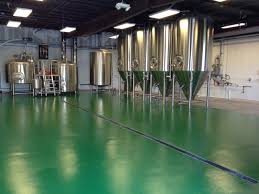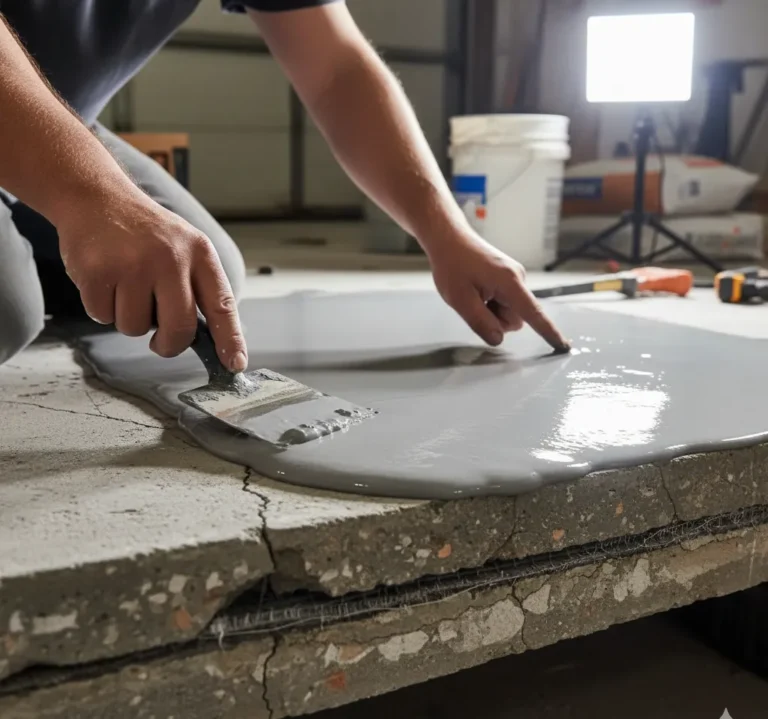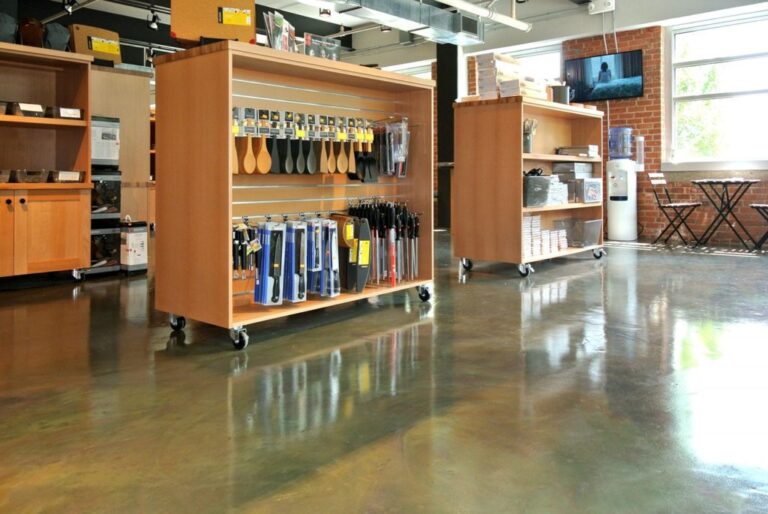Microcement has been gaining significant traction in the world of interior and exterior design. This versatile, durable, and aesthetically pleasing material is revolutionizing the way we think about surfaces in our homes and commercial spaces. As its popularity grows, so does the demand for skilled microcement installers and reliable suppliers. In this comprehensive guide, we’ll explore everything you need to know about microcement, from finding local installers and suppliers to understanding its applications and benefits.
Importance of Finding Local Microcement Installers and Suppliers
When embarking on a microcement project, finding local installers and suppliers is crucial for several reasons. Local professionals are familiar with regional climate conditions, building codes, and material availability, ensuring your project meets all necessary requirements. They can also provide personalized service and quick response times, which is especially important if you encounter any issues during or after installation.
Benefits of Choosing Local Services for Microcement Projects
Opting for local microcement services offers numerous advantages:
- Faster project completion times
- Reduced transportation costs
- Support for local businesses
- Easier communication and on-site consultations
- Potential for long-term relationships for future projects or maintenance
To find reputable microcement installers and suppliers near you, consider:
- Searching online directories and review sites
- Asking for recommendations from local home improvement stores
- Consulting with architects or interior designers in your area
- Attending home and design expos to meet local professionals
What is Microcement?
Microcement is a high-performance, thin-layer cement-based coating that can be applied to various surfaces. It’s composed of fine aggregates, cement, water, additives, and pigments. This unique blend creates a smooth, seamless finish that’s both durable and visually appealing.
Differences Between Microcement and Polished Concrete
While microcement and polished concrete may appear similar, they have distinct differences:
| Microcement | Polished Concrete |
| Thin-layer application (2-3mm) | Requires thicker substrate |
| Can be applied over existing surfaces | Often requires new concrete pour |
| Seamless finish | May have visible joints |
| Wide range of colors and textures | Limited color options |
| Suitable for walls and furniture | Primarily used for flooring |
Advantages of Microcement
Durability and Abrasion Resistance
Microcement boasts exceptional durability and abrasion resistance, making it an ideal choice for high-traffic areas. Its unique composition allows it to withstand heavy use without cracking, chipping, or showing signs of wear.
Key benefits include:
- Long-lasting finish
- Resistance to impacts and scratches
- Minimal maintenance requirements
- Cost-effective over time due to longevity
Slip Resistance and Waterproof Properties
Safety is a top priority in any space, and microcement delivers on this front. Its slip-resistant properties make it suitable for areas prone to moisture, such as bathrooms, kitchens, and outdoor spaces. Additionally, when properly sealed, microcement becomes waterproof, protecting underlying surfaces from water damage.
Advantages of microcement’s waterproof nature:
- Ideal for wet areas like showers and pool surrounds
- Prevents mold and mildew growth
- Easy to clean and maintain
- Suitable for both indoor and outdoor applications
Versatility in Application
One of microcement’s most significant advantages is its versatility. It can be applied to a wide range of surfaces and used in various applications, including:
- Floors
- Walls
- Ceilings
- Furniture
- Countertops
- Exterior facades
This versatility allows for seamless design continuity throughout a space, creating a cohesive and modern aesthetic.
Where Can Microcement Be Applied?
Suitable Substrates for Microcement Application
Microcement’s adaptability extends to the surfaces it can be applied to. Suitable substrates include:
- Concrete
- Cement screed
- Ceramic tiles
- Wood
- Metal
- Plasterboard
- Existing epoxy floors
Before application, it’s crucial to ensure the substrate is properly prepared to guarantee optimal adhesion and longevity of the microcement finish.
Indoor and Outdoor Applications
Microcement’s durability and waterproof properties make it suitable for both indoor and outdoor use. Popular indoor applications include:
- Living room and bedroom floors
- Kitchen and bathroom surfaces
- Shower enclosures
- Staircases
- Fireplace surrounds
Outdoor applications where microcement excels:
- Patios and terraces
- Pool decks
- Driveways
- Exterior walls and facades
- Outdoor kitchens and barbecue areas
High Performing Finish with Microcement
Range of Decorative Finishes Available
Microcement offers a wide array of decorative finishes to suit various design preferences. Some popular options include:
- Smooth and polished
- Textured and rustic
- Metallic and pearlescent
- Matte or glossy
- Stained or colored
These finishes can be combined or customized to create unique, one-of-a-kind surfaces that perfectly complement your space.
Customization Options Including Colors and Textures
One of microcement’s greatest strengths is its customizability. With an extensive range of colors and textures available, you can create a truly personalized look for your project. Some customization options include:
- Solid colors
- Color blending and marbling effects
- Stenciled patterns
- Textured finishes using specialized application techniques
- Incorporation of aggregates for added visual interest
Benefits of Microcement Flooring
Microcement flooring offers numerous advantages over traditional flooring options:
- Seamless, joint-free surface
- Easy to clean and maintain
- Resistant to stains and spills
- Compatible with underfloor heating systems
- Can be applied over existing flooring, reducing renovation time and costs
Examples of Microcement Flooring Projects
Microcement flooring has been successfully used in various settings, including:
- Modern residential homes
- Boutique hotels and restaurants
- Retail stores and showrooms
- Office spaces and conference rooms
- Art galleries and museums
These projects showcase microcement’s ability to create stunning, durable floors that enhance the overall aesthetic of any space.
Outdoor Microcement Applications
Advantages of Using Microcement Outdoors
Microcement’s unique properties make it an excellent choice for outdoor applications:
- UV resistant, preventing fading and discoloration
- Freeze-thaw resistant in colder climates
- Non-slip surface for safety in wet conditions
- Low maintenance and easy to clean
- Seamless finish reduces the risk of weed growth between joints
Popular Outdoor Applications
Some popular outdoor uses for microcement include:
- Pool surrounds and decks
- Patios and terraces
- Driveways and walkways
- Outdoor kitchens and dining areas
- Garden furniture and planters
These applications demonstrate microcement’s versatility and ability to withstand various environmental conditions while maintaining its aesthetic appeal. Microcement cost factors The price of microcement depends on how big the area is and what type you choose Some other things that affect the cost are how much work is needed to prepare the surface and who does the installation Microcement wall finishes
Durable microcement surfaces are tough and long-lasting floor coatings that look smooth and modern Economical Microcement Solutions offers affordable ways to use thin cement coatings for floors and walls
Sleek microcement surfaces are smooth and modern-looking floors or walls They are made from a special cement mixture that creates a seamless and stylish finish Top microcement manufacturers produce high-quality thin cement coatings for floors and walls These companies specialize in creating durable and stylish microcement products for construction projects
Durable museum surfaces are special materials used in museums that can withstand lots of touching and cleaning without getting damaged These surfaces help protect exhibits and make sure they stay in good condition for a long time Microcement flooring aesthetics
Microcement showcases elevate boutique displays by adding a sleek and modern look to store shelves and counters The smooth finish of microcement helps products stand out and catch customers’ eyes Sleek microcement surfaces are smooth and modern-looking floors or walls They are made by applying a thin layer of special cement that can be polished to create a shiny finish
Contemporary kitchen microcement
Step-by-Step Process of Microcement Application
The microcement application process typically involves the following steps:
- Surface preparation and cleaning
- Application of a primer coat
- Installation of fiberglass mesh for added strength (if required)
- Application of base coats
- Application of finishing coats
- Sanding and smoothing
- Sealing for protection and enhanced durability
Importance of Professional Installation
While DIY microcement kits are available, professional installation is highly recommended for several reasons:
- Expertise in surface preparation and application techniques
- Access to high-quality materials and equipment
- Knowledge of proper mixing ratios and curing times
- Ability to achieve a flawless, long-lasting finish
- Warranty protection for the installed product
Professional installers can ensure your microcement project is completed to the highest standards, maximizing its longevity and aesthetic appeal.
Microcement FAQ’s
What is the abrasion resistance and hardness of microcement?
Microcement offers excellent abrasion resistance and hardness, making it suitable for high-traffic areas. Its unique composition allows it to withstand daily wear and tear without showing signs of damage. The exact hardness can vary depending on the specific product and application method used.
What is the slip resistance of microcement?
Microcement can be formulated to provide excellent slip resistance, making it safe for use in areas prone to moisture. The level of slip resistance can be adjusted during the application process to meet specific requirements. This feature makes microcement an ideal choice for bathrooms, kitchens, and outdoor spaces.
Can microcement be applied over underfloor heating?
Yes, microcement can be applied over underfloor heating systems. Its thin application layer allows for efficient heat transfer, making it an excellent choice for heated floors. However, it’s crucial to follow proper installation guidelines to ensure compatibility and prevent any potential issues.
Is microcement waterproof?
When properly sealed, microcement becomes waterproof, offering excellent protection against moisture. This property makes it ideal for use in wet areas such as bathrooms, kitchens, and outdoor spaces. Regular maintenance of the sealant is essential to maintain its waterproof properties over time.
On what substrates can microcement be applied?
Microcement can be applied to a wide range of substrates, including concrete, cement screed, ceramic tiles, wood, metal, and plasterboard. The versatility of microcement allows it to be used on both new constructions and renovation projects. Proper surface preparation is crucial for ensuring optimal adhesion and longevity of the microcement finish.
How long does a renovation with microcement last?
A well-installed and properly maintained microcement surface can last for many years. The longevity of a microcement renovation depends on factors such as the quality of materials used, the skill of the installer, and the level of maintenance provided. With proper care, microcement surfaces can maintain their appearance and functionality for 15-20 years or more.
Can microcement lose color over time?
When properly sealed and maintained, microcement is highly resistant to color fading. However, like any material, prolonged exposure to direct sunlight and harsh environmental conditions may cause some color changes over time. Regular maintenance and resealing can help preserve the original color and appearance of the microcement surface.
Why might there be differences in brightness between the sample and the work being performed?
Variations in brightness between samples and the final work can occur due to several factors. These may include differences in application techniques, lighting conditions, and the natural curing process of microcement. It’s important to discuss expectations with your installer and understand that slight variations are normal and can contribute to the unique character of each microcement installation.
Can colors be combined on the same surface?
Yes, colors can be combined on the same microcement surface to create unique designs and effects. Skilled installers can blend colors, create patterns, or incorporate multiple shades to achieve custom looks. This flexibility allows for creative expression and the ability to match or complement existing design elements in a space.
Is it compulsory to apply the microcement mesh?
The use of microcement mesh is not always compulsory but is often recommended for added strength and crack resistance. The decision to use mesh depends on factors such as the substrate condition, the intended use of the surface, and the specific microcement product being used. Your installer can advise on whether mesh is necessary for your particular project.
What drying time should we allow between the first coat of sealer and the second coat?
The drying time between sealer coats can vary depending on the specific product used and environmental conditions. Generally, it’s recommended to wait 2-4 hours between coats. However, it’s crucial to follow the manufacturer’s instructions for the particular sealer being used, as some may require longer drying times for optimal performance.
How much does microcement cost per m2?
The cost of microcement per square meter can vary significantly depending on factors such as the complexity of the project, the quality of materials used, and the experience of the installer. On average, prices can range from $50 to $150 per square meter. It’s best to obtain quotes from multiple installers to get an accurate estimate for your specific project.
Can microcement be applied at low temperatures?
Microcement application is generally not recommended at very low temperatures, as it can affect the curing process and final quality of the surface. Most manufacturers recommend applying microcement at temperatures above 5°C (41°F). If application in colder conditions is necessary, special precautions and additives may be required to ensure proper curing.
Can microcement be applied in very hot weather?
While microcement can be applied in hot weather, extreme heat can pose challenges to the application process. High temperatures can cause the material to dry too quickly, potentially leading to cracking or other issues. In hot conditions, installers may need to take special precautions, such as working in shaded areas or adjusting the mix to slow down the curing process.





